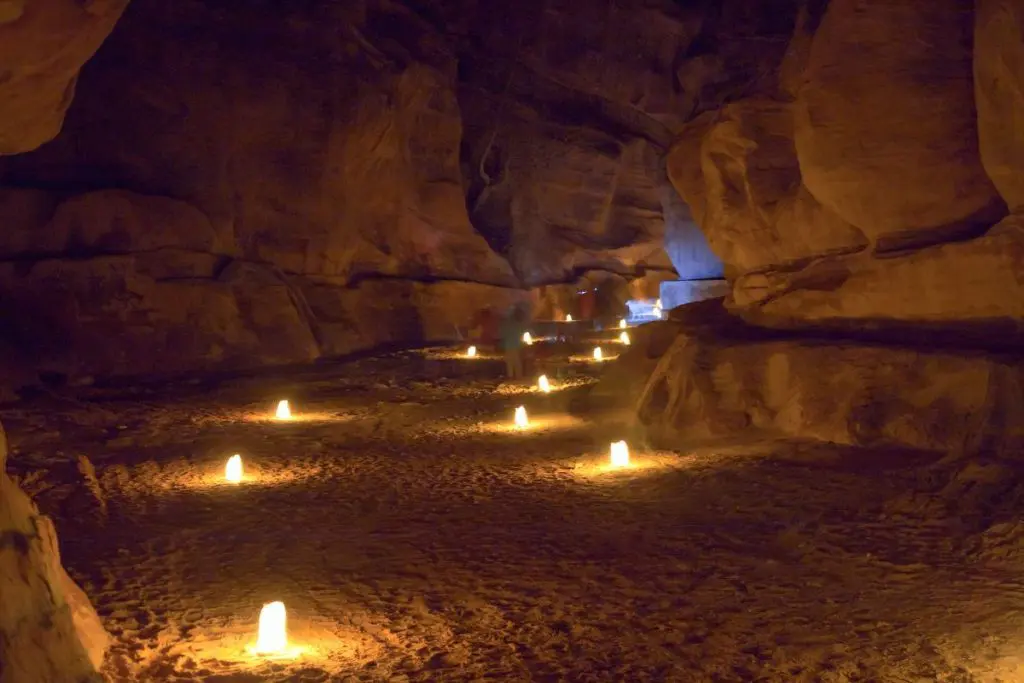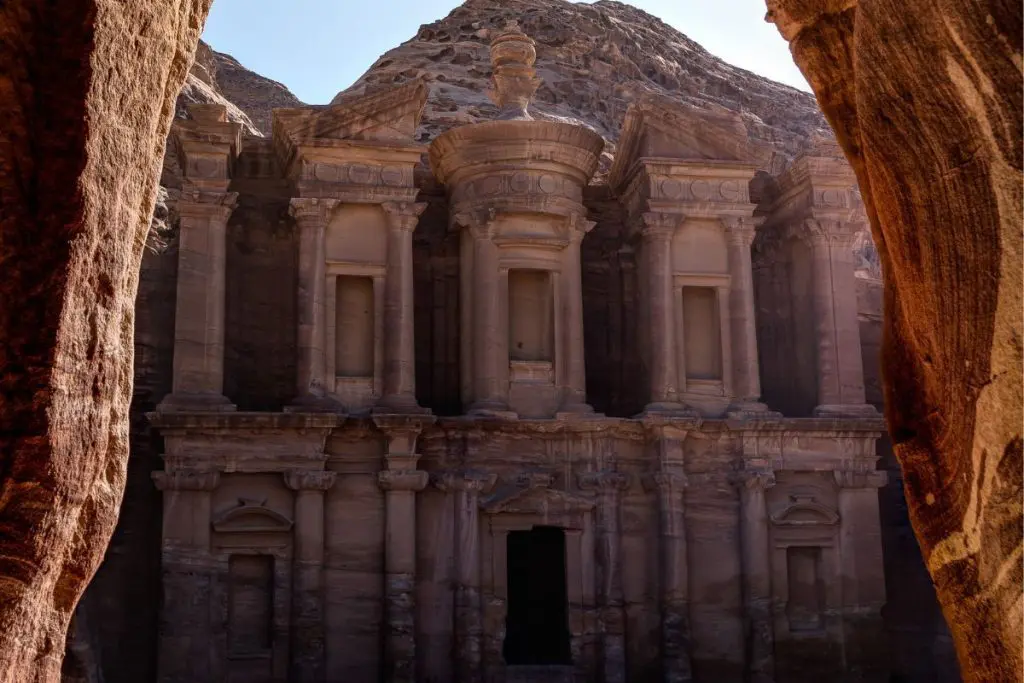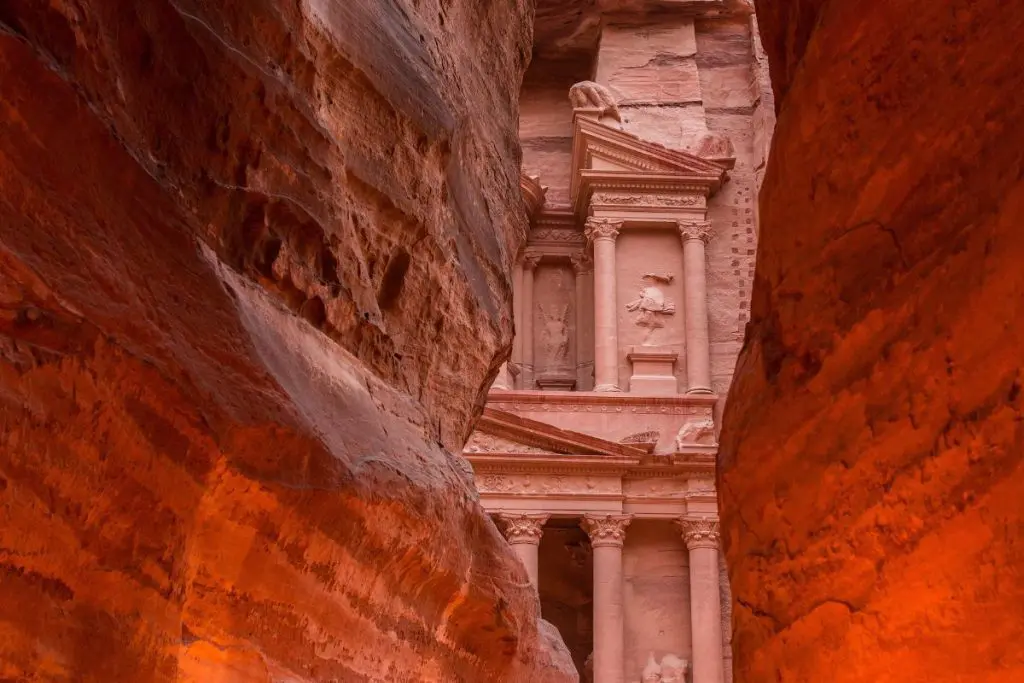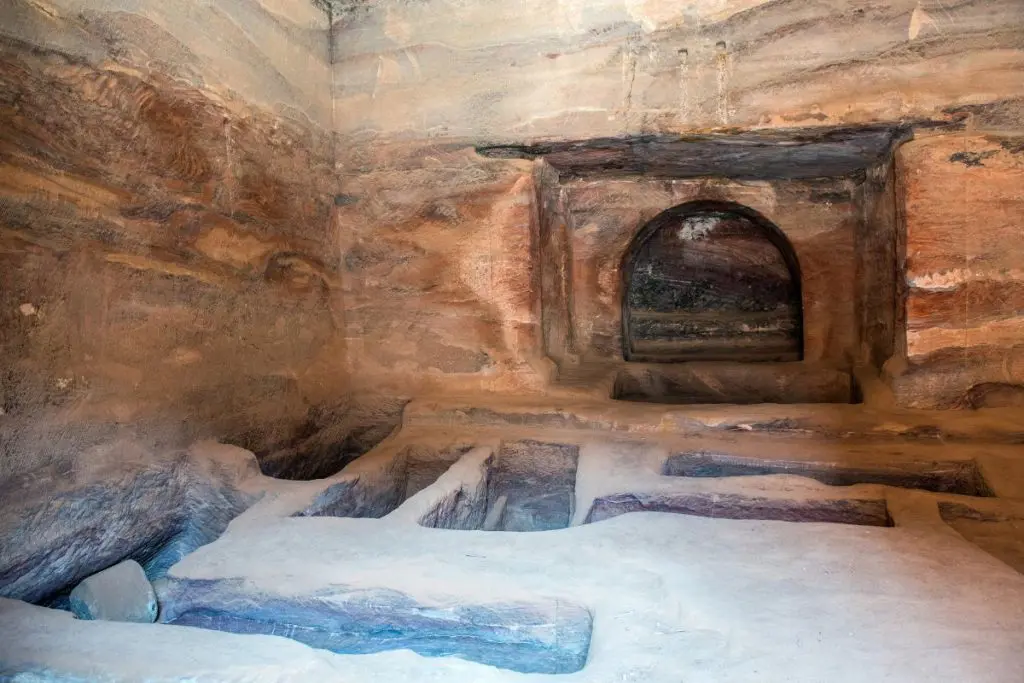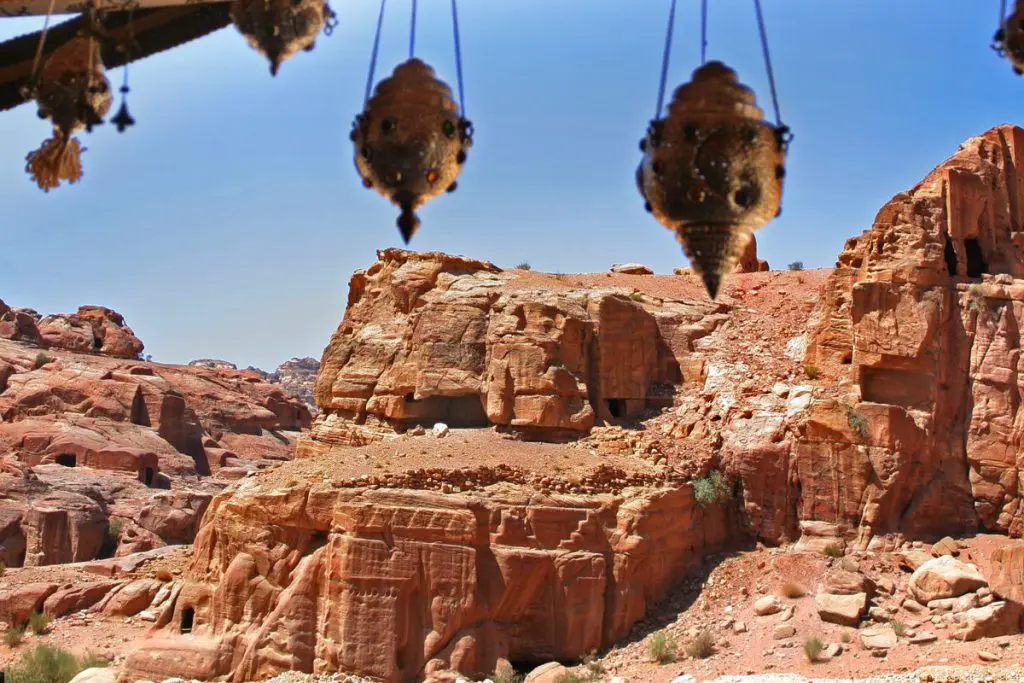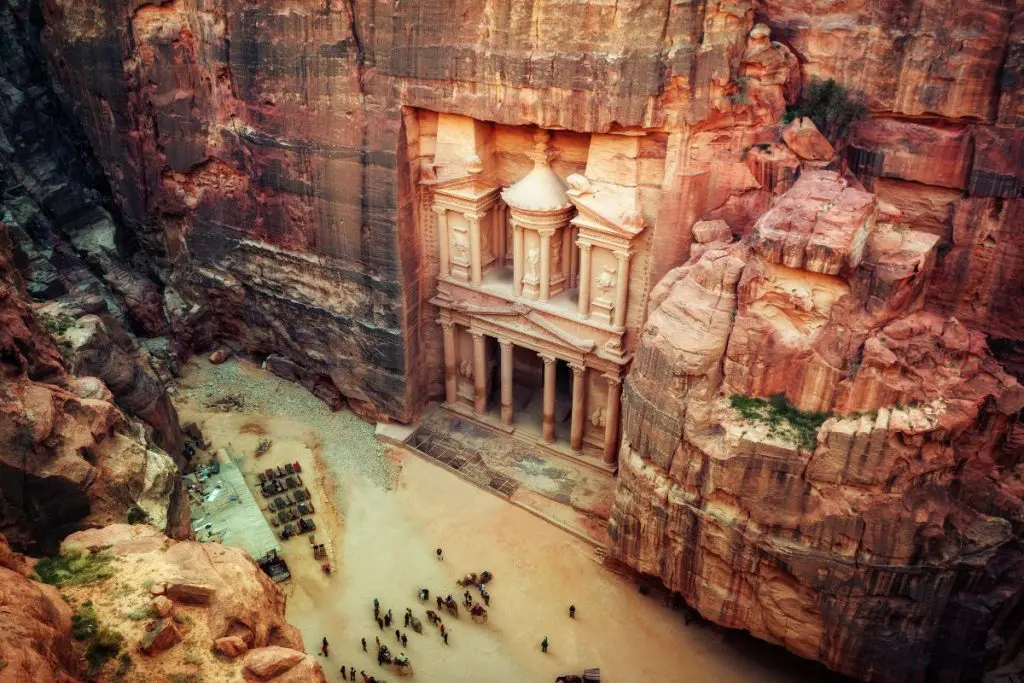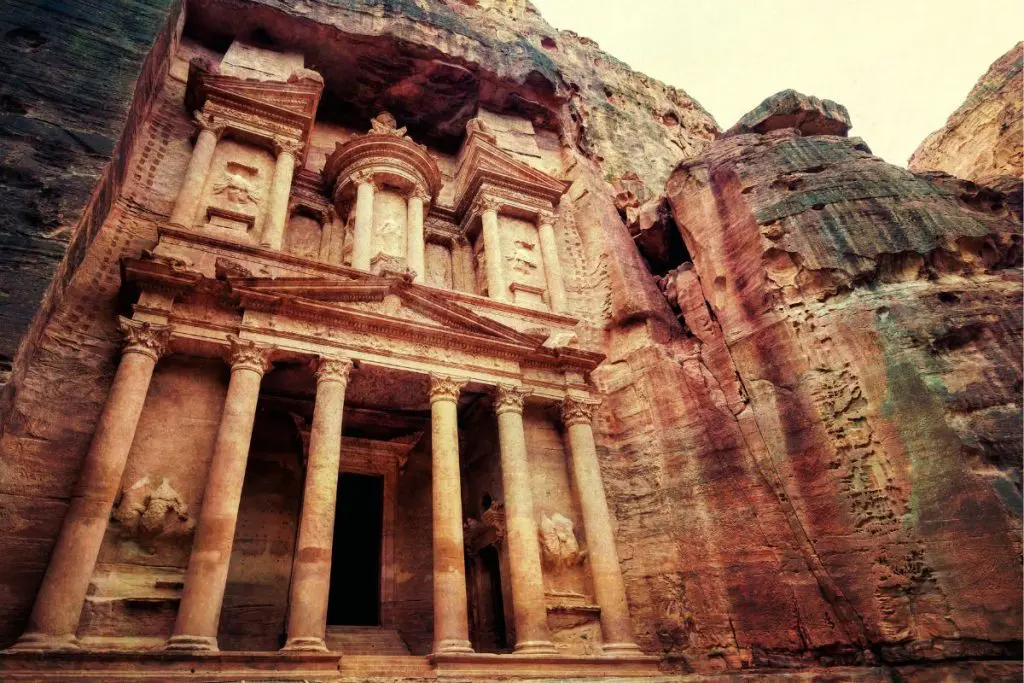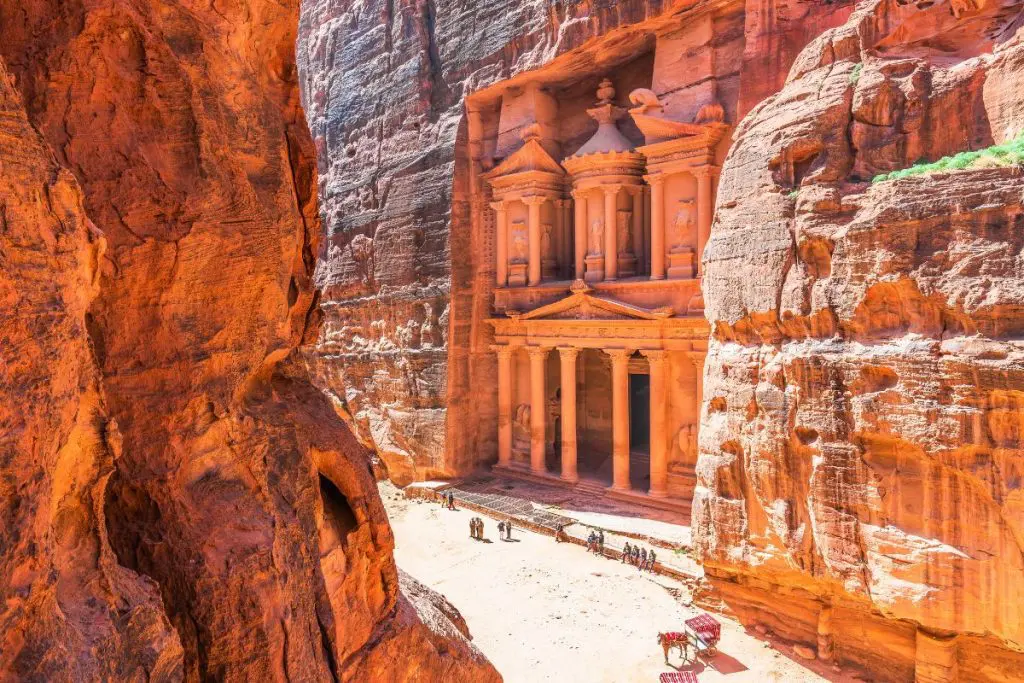
Explore Petra, Jordan’s most visited tourist attraction and one of the New 7 Wonders of the World. Often referred to as the ‘Rose City’ for its distinct rose-colored stone, Petra showcases remarkable rock-cut architecture and an intricate water conduit system. This historical city remained unknown to the Western world until 1812, earning it the nickname the ‘Lost City.’ Petra served as the capital of the Nabataean Kingdom in the 4th century BCE and is a representation of Jordan’s rich cultural heritage. UNESCO has described Petra as ‘one of the most precious cultural properties of man’s cultural heritage.’ Witness the breathtaking beauty and historical significance of Petra, a real-life wonder that you need to see to believe.
Recommended:

The reason why Petra is one of the “7 Wonders of the World”?
Petra is designated as one of the New 7 Wonders of the World due to its exceptional historical and architectural significance. The New Seven Wonders of the World is a list created through a global poll conducted by the New7Wonders Foundation, where people worldwide voted for their favorite landmarks.
Petra earned its place on this prestigious list for several reasons:
Architectural Facts: Petra is renowned for its unique rock-cut architecture, with elaborate structures carved into rose-red cliffs. The craftsmanship and engineering of the Nabateans, who created the city, are considered remarkable.
Historical Background: Petra served as the capital of the Nabataean Kingdom in the 4th century BCE. The city played a vital role in ancient trade routes and had strategic importance in the region.
Cultural Sides: The site is a testament to the Nabatean civilization and its advanced water conduit system, showcasing their ingenuity and cultural achievements.
Awe-Inspiring Beauty: The scenic beauty of Petra, especially the famous Al-Khazneh (the Treasury) and the Siq, contributes to its status as a wonder.
Global Recognition: Petra’s inclusion on the list reflects its universal appeal and recognition as a world heritage site.
Petra’s combination of architectural brilliance, historical significance, and stunning natural surroundings contributed to its recognition as one of the New 7 Wonders of the World.
Photos of Petra, Jordan
Mystery of Petra

The mystery surrounding Petra adds an intriguing layer to its historical allure. While Petra is generally acknowledged for its rock-cut architecture, one particular element stands out, capturing the curiosity of visitors and archaeologists alike.
At the heart of this mystery is a large temple or tomb, the purpose of which remains elusive despite extensive exploration and study. The structure is characterized by its enigmatic nature, prompting questions about its original function, significance, and the civilization that constructed it. Despite being extensively examined, scholars have yet to definitively determine whether it served as a religious sanctuary, a royal tomb, or had multifaceted purposes.
Local legends further contribute to the mystique of Petra, particularly concerning a large pockmarked urn situated at the center of the second level of this enigmatic structure. According to these tales, a sense of hidden treasures pervades the site, with some locals speculating that ancient riches might be concealed within the depths of this urn. The mystery surrounding the contents of this urn adds an element of intrigue and anticipation for those exploring Petra.
Visitors to Petra are presented with a unique opportunity to engage with this mystery in various ways. The site’s expansive layout allows for exploration through a variety of routes, offering a firsthand experience of the enigmatic structure and the surrounding archaeological wonders. As visitors navigate the historical pathways and marvel at the intricate rock-cut architecture, the mystery of Petra persists. The allure of discovery and the desire to unravel the mysteries of Petra continue to captivate both scholars and tourists. This archaeological gem remains a fascinating enigma waiting to be deciphered.
Facts About the Siq in Petra

The Siq is a narrow and winding gorge that serves as the main entrance to the ancient city of Petra in Jordan. This natural geological formation is a spectacular and dramatic entryway, leading visitors to the heart of the archaeological site. Here are some key details about the Siq:
Geological Formation: The Siq is a geological fault that resulted from tectonic forces, creating a narrow canyon with towering sandstone cliffs on either side. The walls of the Siq reach heights of up to 200 meters (approximately 650 feet) in some places.
Entrance to Petra: The Siq functions as a natural corridor, leading visitors from the outer desert landscape into the heart of Petra. It is the primary access point, and as visitors walk through the Siq, they are gradually introduced to the grandeur of the ancient city.
Length and Dimensions: The Siq is approximately 1.2 kilometers (0.75 miles) in length. Its width varies along the pathway, but in some places, it can be as narrow as 3 meters (10 feet). The towering cliffs create a dramatic and awe-inspiring passage.
Rock Formations: The sandstone walls of the Siq exhibit a range of colors, including shades of red, pink, and orange. The rock formations feature interesting patterns and textures, adding to the visual appeal of the journey through the gorge.
Obelisk Tomb and Bab as-Siq Triclinium: Along the Siq, visitors encounter several notable archaeological features, including the Obelisk Tomb and the Bab as-Siq Triclinium. These are carved structures that provide a glimpse into the craftsmanship of the Nabataeans.
Experience: Walking through the Siq is a sensory experience, with the narrow pathway creating a sense of anticipation and mystery. The play of light and shadow on the rock formations adds to the atmospheric journey.
End Point: The Siq dramatically culminates at its end with the unveiling of the iconic Al-Khazneh (the Treasury), one of Petra’s most famous and impressive structures. The sudden appearance of this monumental facade is a breathtaking moment for visitors.
The Siq not only serves as an entry point to Petra but also contributes significantly to the overall mystique and allure of the archaeological site. The Siq is surely an integral part of the Petra experience.
Famous Movies Filmed In Petra

Discover the cinematic magic woven into the ancient landscapes of Jordan. Petra, a UNESCO World Heritage Site, has not only preserved its historical treasures but also played a starring role in the world of film!
In “The Mummy Returns,” Petra’s rock-cut architecture and unique landscape created a mystique that left an indelible mark on audiences. The dramatic structures showcased in the film brought international attention, contributing to Petra’s timeless appeal.
“Indiana Jones and the Last Crusade” further elevated Petra’s profile. Iconic scenes, including the entrance to the fictional “Canyon of the Crescent Moon,” propelled Petra into the global spotlight, sparking increased interest and tourism to this archaeological wonder.
Adding to the cinematic tapestry, “Lawrence of Arabia” captured the stunning Middle Eastern landscapes, with scenes filmed in Wadi Rum, Jordan, showcasing the region’s timeless beauty.
“The Martian” utilized Wadi Rum’s otherworldly landscapes as a stand-in for the surface of Mars, emphasizing Jordan’s diverse natural wonders beyond Petra.
Disney’s live-action “Aladdin” transported audiences to the fictional city of Agrabah, with Wadi Rum providing a fantastical backdrop of red sands and towering formations.
Most recently, “Dune” embraced the vast landscapes of Wadi Rum to bring Frank Herbert’s sci-fi masterpiece to life, showcasing Jordan’s role in creating visually stunning cinematic worlds.
“Transformers: Revenge of the Fallen”,directed by Michael Bay, brought its high-octane action to the Middle East, with key scenes filmed in both Egypt and Jordan. The Jordanian shoot included a crew of 160 technicians engaging in four days of principal photography. The picturesque locations chosen for filming included the ancient city of Petra, nestled on top of a mountain, the scenic valley area of Wadi Rum, and the well-known fertile city of Salt. Notably, the Jordanian Air Force played a role in supporting the production during the filming in Petra, adding a unique element to the cinematic experience. This collaboration between Hollywood and the historic landscapes of Jordan contributed to the film’s visual spectacle and showcased the country’s rich cultural and natural heritage on the global stage.
These films not only highlighted the architectural marvels of Petra but also showcased the diverse and captivating landscapes of Jordan. As you explore Petra, you step into the real-life settings of these cinematic adventures, where history and film seamlessly intertwine
History of Earthquakes in Petra
Between 1BC and 8AD Petra experienced harsh earthquakes. An earthquake which occurred in 363AD ruined numerous of the structures in Petra and furthermore, majorly damaged the water system.
FAQs About Petra, Jordan
Petra is famous for its unique rock-cut structures, including the iconic Al-Khazneh (the Treasury) and the Siq. It is designated as one of the New 7 Wonders of the World, showcasing exceptional architectural and historical importance.
The Al-Khazneh is one of Petra’s most iconic structures, believed to be a mausoleum or royal tomb. Its intricate facade and grandeur contribute to its significance and draw millions of visitors.
Petra is located in southern Jordan. The nearest airport is in the city of Amman. Visitors can travel to Petra by car, bus, or organized tours from Amman or other cities in Jordan.
Yes, visitors have the option to explore Petra independently. However, guided tours are also available and recommended for a more in-depth understanding of the site’s history and significance.
The name Petra is derived from the Greek word ‘petros’, which means rocks.
Yes, there are local legends surrounding certain structures in Petra, adding an air of mystery. For example, there are speculations about hidden treasures within the archaeological site.
The best time to visit Petra is during the cooler months, from late autumn to spring, as summers can be extremely hot. Early mornings and late afternoons are also recommended for a more comfortable experience.
Petra’s sophisticated water conduit system is a testament to the Nabataeans’ engineering skills. The system, which included dams and channels, allowed the city to thrive in the arid desert environment.
Yes, guided tours are available in Petra, and they provide valuable insights into the history, architecture, and significance of the various structures within the archaeological site. Visitors can choose from guided group tours or hire a private guide.
While visitors can explore many areas of Petra, climbing on or entering certain structures, such as the Monastery, may be restricted to preserve the site. Always check with local authorities and follow guidelines for conservation.
Yes, there are hotels and accommodations in the nearby town of Wadi Musa, providing convenient lodging options for visitors exploring Petra. It’s advisable to book accommodations in advance, especially during peak tourist seasons.
A Swiss explorer called Johann Ludwig Burckhardt discovered Petra in 1812. Because it was an unknown metropolitan for around 5 centuries, it is also called the ‘Lost City’.
Interested in visiting Petra with Travel Talk? Check out our Jordan tours for more information.
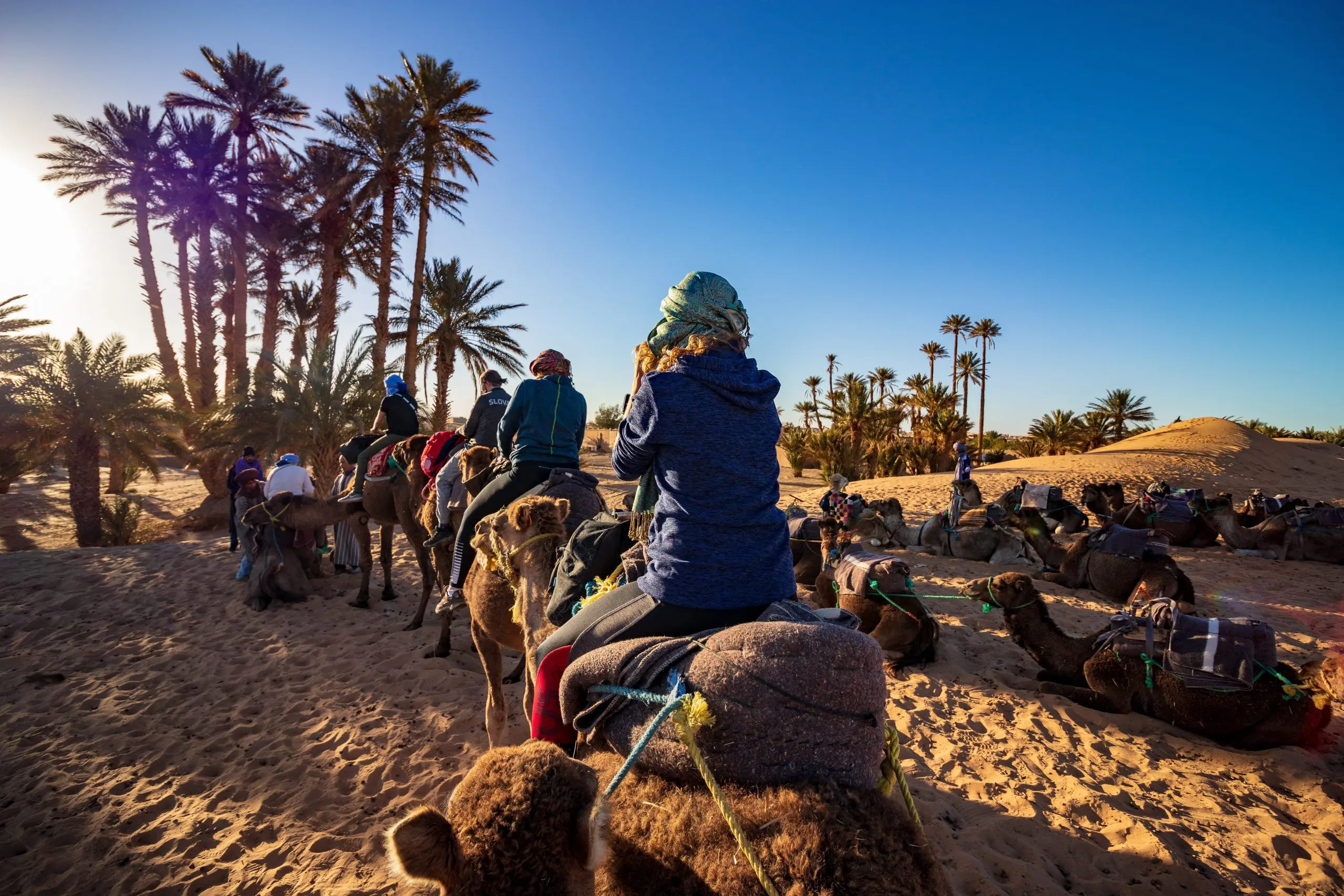 December Sale; Save 50%
December Sale; Save 50%  Croatia Sailing : Save 50%
Croatia Sailing : Save 50% Asia Tours : 50% Off
Asia Tours : 50% Off Central & Eastern Europe Tours: 50% Off
Central & Eastern Europe Tours: 50% Off  Why Travel Talk
Why Travel Talk Travel Talk Blog
Travel Talk Blog Responsible Travel
Responsible Travel Fair Travels with Travel Talk
Fair Travels with Travel Talk